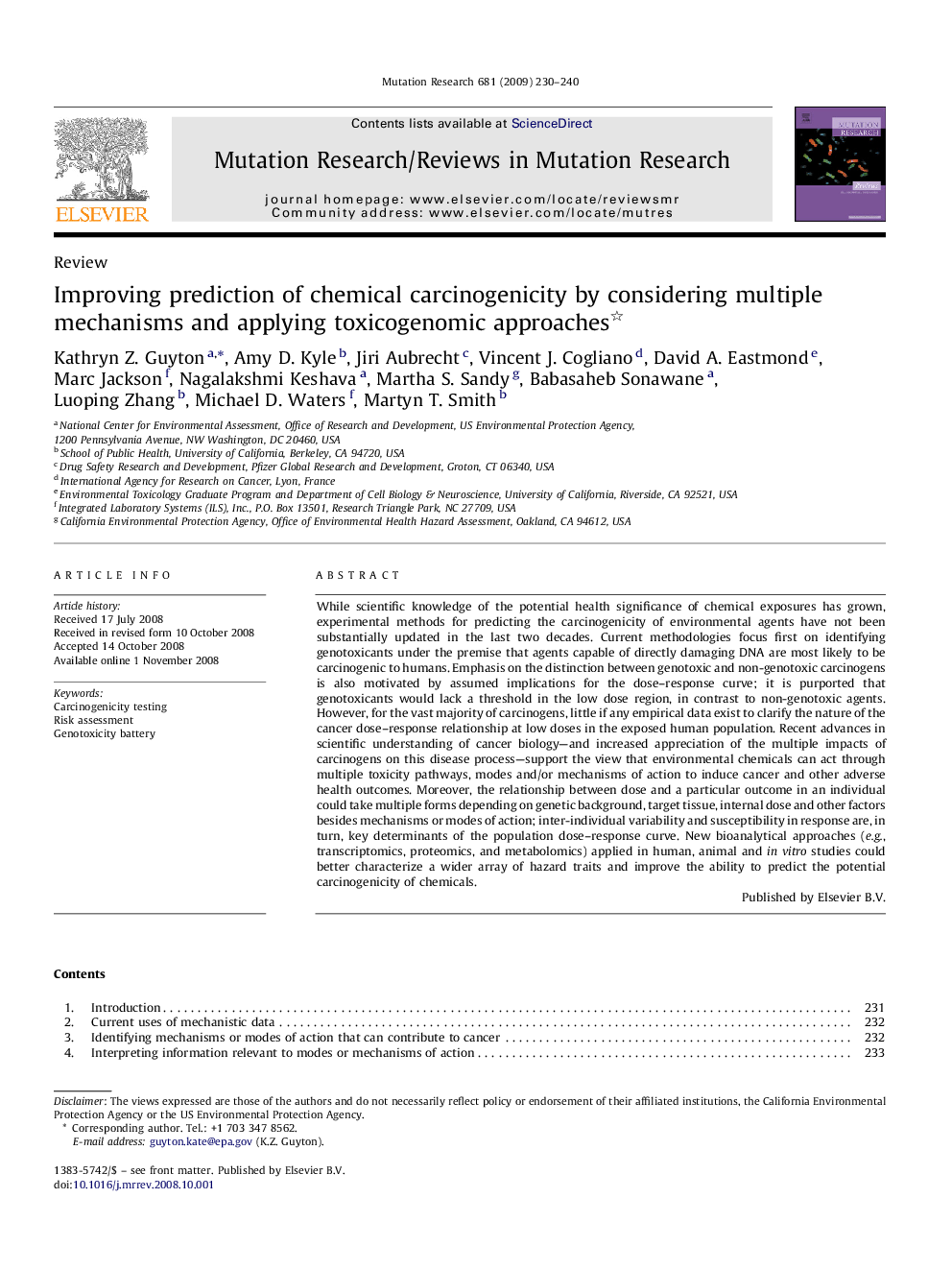| کد مقاله | کد نشریه | سال انتشار | مقاله انگلیسی | نسخه تمام متن |
|---|---|---|---|---|
| 2149711 | 1548760 | 2009 | 11 صفحه PDF | دانلود رایگان |

While scientific knowledge of the potential health significance of chemical exposures has grown, experimental methods for predicting the carcinogenicity of environmental agents have not been substantially updated in the last two decades. Current methodologies focus first on identifying genotoxicants under the premise that agents capable of directly damaging DNA are most likely to be carcinogenic to humans. Emphasis on the distinction between genotoxic and non-genotoxic carcinogens is also motivated by assumed implications for the dose–response curve; it is purported that genotoxicants would lack a threshold in the low dose region, in contrast to non-genotoxic agents. However, for the vast majority of carcinogens, little if any empirical data exist to clarify the nature of the cancer dose–response relationship at low doses in the exposed human population. Recent advances in scientific understanding of cancer biology—and increased appreciation of the multiple impacts of carcinogens on this disease process—support the view that environmental chemicals can act through multiple toxicity pathways, modes and/or mechanisms of action to induce cancer and other adverse health outcomes. Moreover, the relationship between dose and a particular outcome in an individual could take multiple forms depending on genetic background, target tissue, internal dose and other factors besides mechanisms or modes of action; inter-individual variability and susceptibility in response are, in turn, key determinants of the population dose–response curve. New bioanalytical approaches (e.g., transcriptomics, proteomics, and metabolomics) applied in human, animal and in vitro studies could better characterize a wider array of hazard traits and improve the ability to predict the potential carcinogenicity of chemicals.
Journal: Mutation Research/Reviews in Mutation Research - Volume 681, Issues 2–3, March–June 2009, Pages 230–240